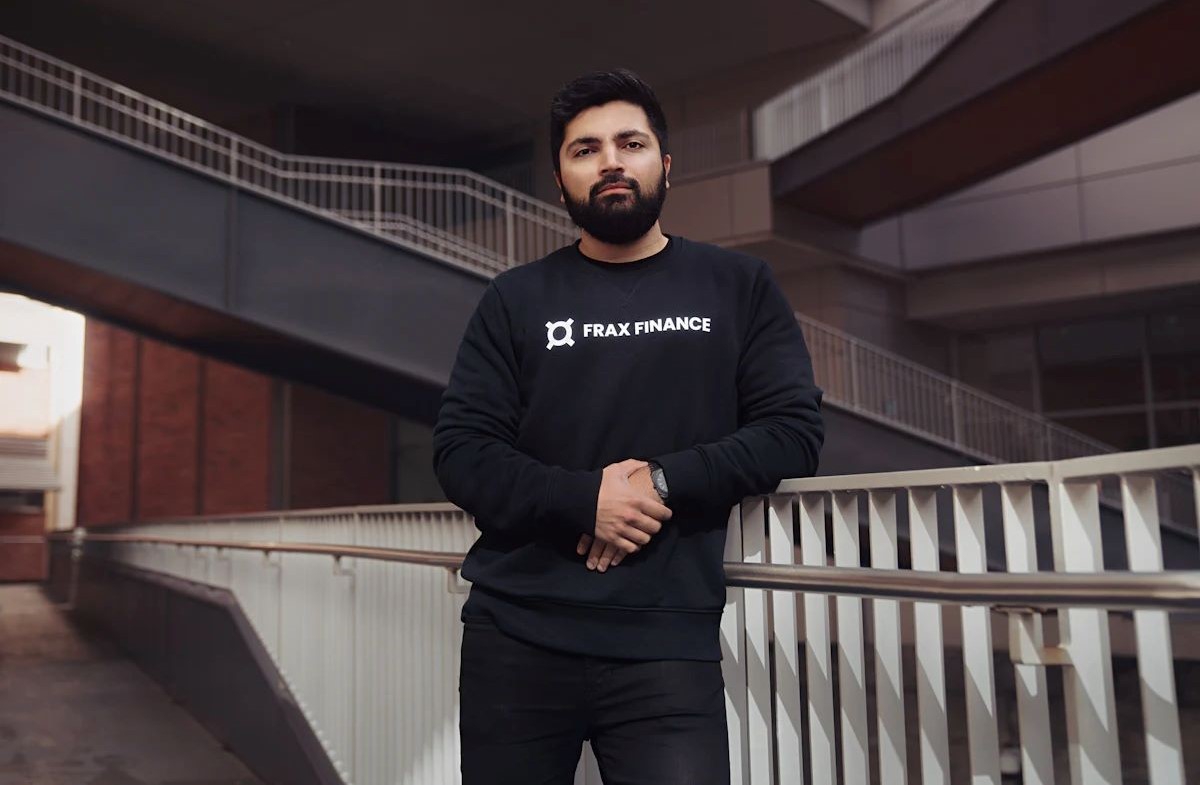







































The Journey of Sam Kazemian: How Frax Redefined Stablecoin Stability
 STABLE
STABLE
 NEC
NEC
 VSN
VSN
 DEFI
DEFI
 FRAX
FRAX

- Sam Kazemian revolutionized stablecoins with Frax by combining algorithmic stability with full collateralization for reliable value.
- Fraxchain aims to expand Frax’s ecosystem, enhancing scalability and integrating with major blockchains under Kazemian’s leadership.
Sam Kazemian’s foray into the realm of cryptocurrencies began not as a calculated financial enterprise, but as a natural extension of his great interest and passion for creative technologies. The possibilities and expanding digital worlds of the internet always drew Kazemian as a child.
This passion eventually led him to the chaotic and unregulated realm of cryptocurrency throughout his undergraduate years. But it wasn’t simply the potential of decentralized finance that piqued his interest; it was also the obvious inefficiencies and volatility that accompanied it.
In 2019, Kazemian co-founded Frax as a result of his dissatisfaction with the current stablecoins. These assets, which were intended to maintain a steady value relative to a fiat currency such as the US dollar, were either highly centralized or overly reliant on vulnerable algorithms.
Kazemian envisioned something different: a stablecoin that could harness the power of algorithms while remaining fully collateralized. This twofold strategy tried to establish a solid, dependable digital dollar, a task that many had attempted but few had accomplished.
A New Era of Stability: Frax’s Dual-Layered Approach
Frax was launched in December 2020 and rapidly became a sensation in the DeFi (Decentralized Finance) community. The protocol presented a novel paradigm that blended algorithmic supply changes with collateral reserves, ensuring that one Frax was always worth one dollar.
This concept differed significantly from the traditional stablecoins of the time, which either depended substantially on collateral (like Tether) or solely on algorithms (like the ill-fated Terra).
Kazemian’s method was groundbreaking. He recognized that, in order to achieve true stability, a stablecoin required both mathematical rigor and tangible assurance in the form of collateral.
In an industry where cynicism and uncertainty are rampant, this dual-layered approach not only provided stability but also encouraged user trust.
Overcoming Early Challenges: Unprecedented Rise
Frax’s success was practically immediate. Within days of its debut, the protocol had generated more than $300 million in total value locked (TVL). Particularly for a project without the support of a sizable financial institution or digital behemoth, this level of accomplishment was unprecedented.
However, the early days of Frax were not without their obstacles. The team faced the formidable task of ensuring that their stablecoin remained pegged to the dollar while navigating the turbulent cryptocurrency market.
Kazemian’s leadership during this time was critical. He guided the project through its expected ups and downs, emphasizing transparency and safety. Unlike many of his predecessors, Kazemian was forthright about Frax’s limitations and risks.
He came to the realization that one had to earn one’s confidence, particularly in a market where so many people had experienced disappointment due to failed businesses and broken promises.
Expanding Horizons: The Vision Behind Frax v3 and Fraxchain
As Frax expanded, so did Kazemian’s vision for the project. In 2023, he introduced Frax v3, a major improvement that increased the protocol’s stability. This version aims for a fully collateralized approach, addressing one of the most common objections leveled at algorithmic stablecoins: their sensitivity to market shocks.
Under Kazemian’s leadership, Frax implemented a 100% collateralization ratio, ensuring that every Frax in circulation was backed by real assets.
But Kazemian was not satisfied with simply increasing Frax’s stability. He also wanted to enhance its capabilities and reach. One of his most ambitious initiatives is Fraxchain, a Layer 2 solution designed to improve the scalability and interoperability of the Frax ecosystem.
Kazemian envisions a future in which Frax is more than just a stablecoin and a key component of the global digital economy. This involves integrating with other blockchains and introducing new products such as sFRAX and FXB, which are intended to generate yield and add stability mechanisms.
Kazemian’s ambition for Frax goes well beyond the present cryptocurrency scene. Stablecoins, he believes, will serve as the foundation for a new, decentralized financial system that is more efficient, transparent, and accessible than the current one.
He has talked extensively about the potential for stablecoins like Frax to develop into “the digital dollar” of the future, an international currency free from restrictions imposed by national borders and central banks.
In addition to his work with Frax, Kazemian is looking into partnerships with other significant companies in the crypto industry. He has hinted at collaborations with PayPal and Paxos, which might result in Frax becoming a key asset in the developing stablecoin industry.
These collaborations, if successful, would be a huge step forward for Frax and Kazemian’s vision of a decentralized financial ecosystem.

